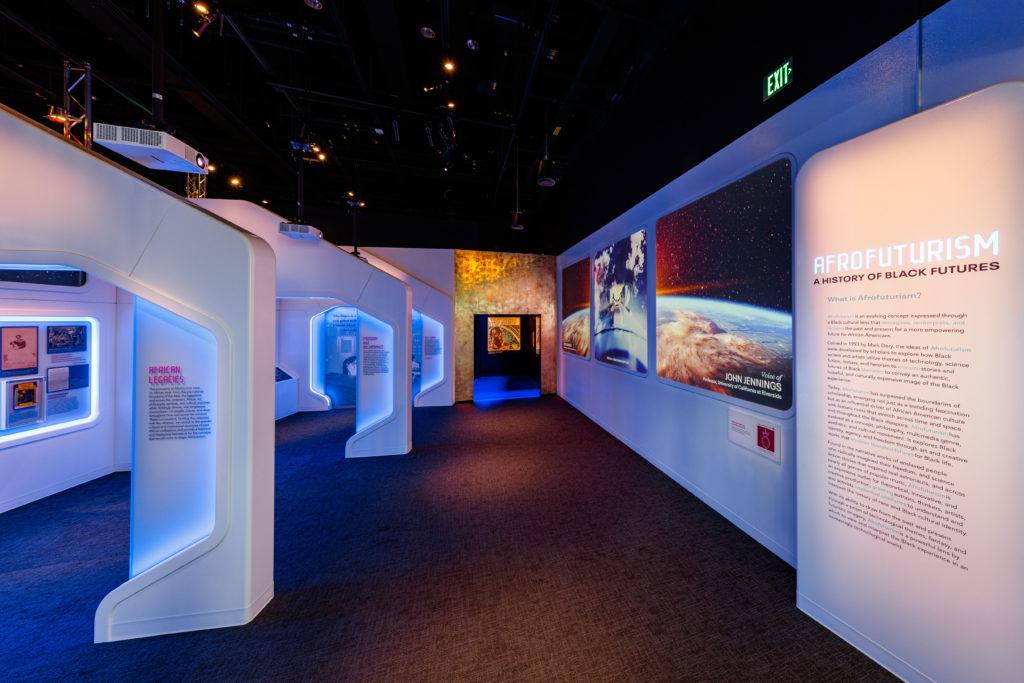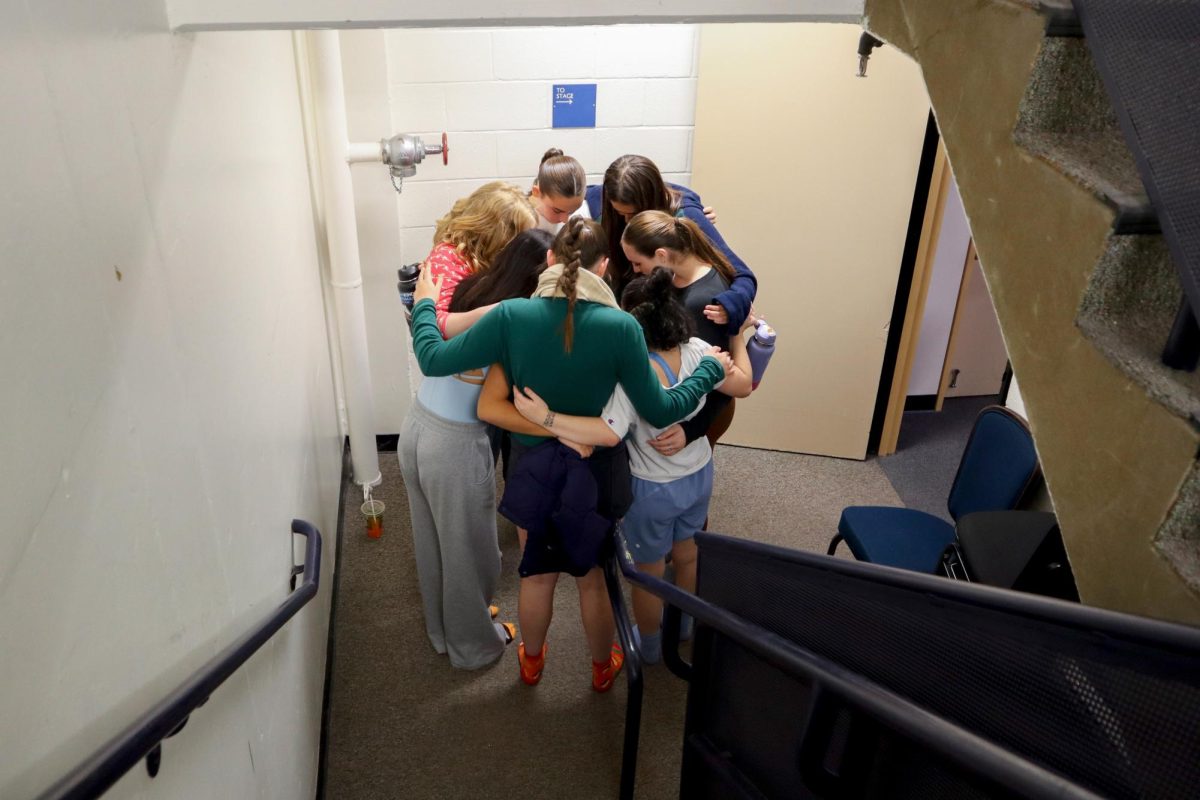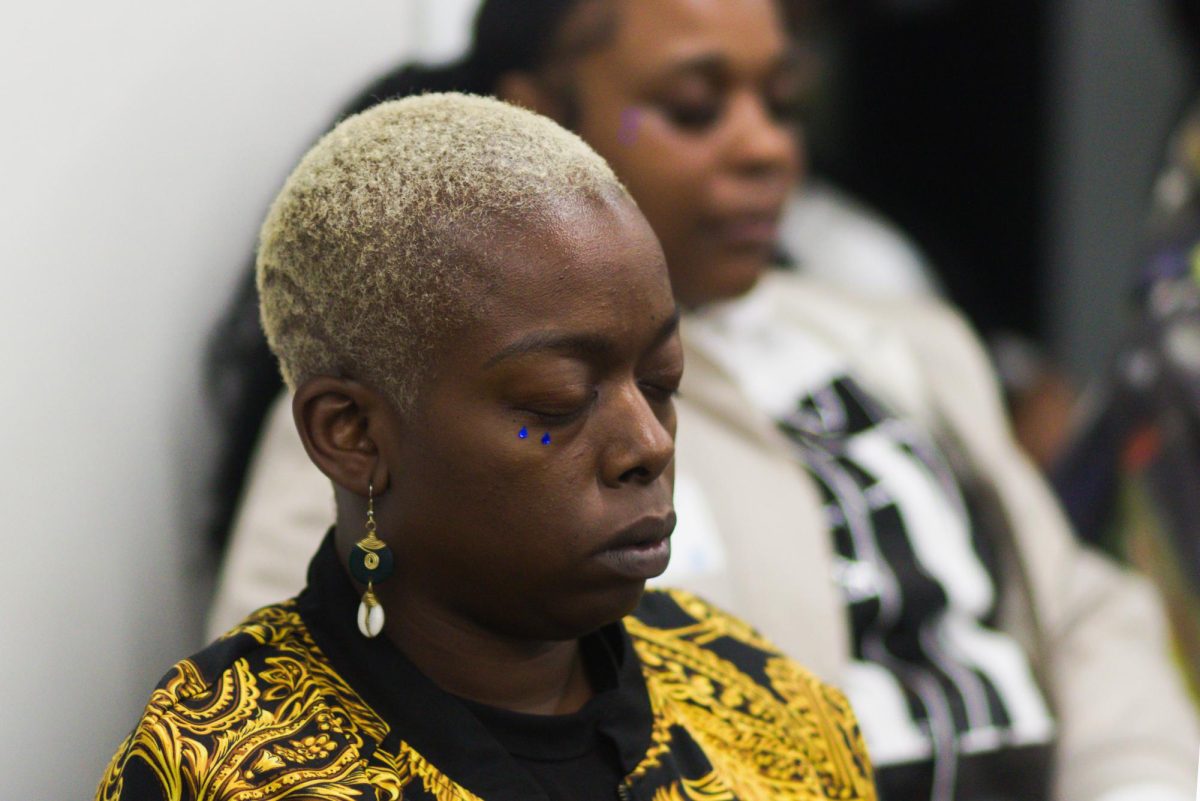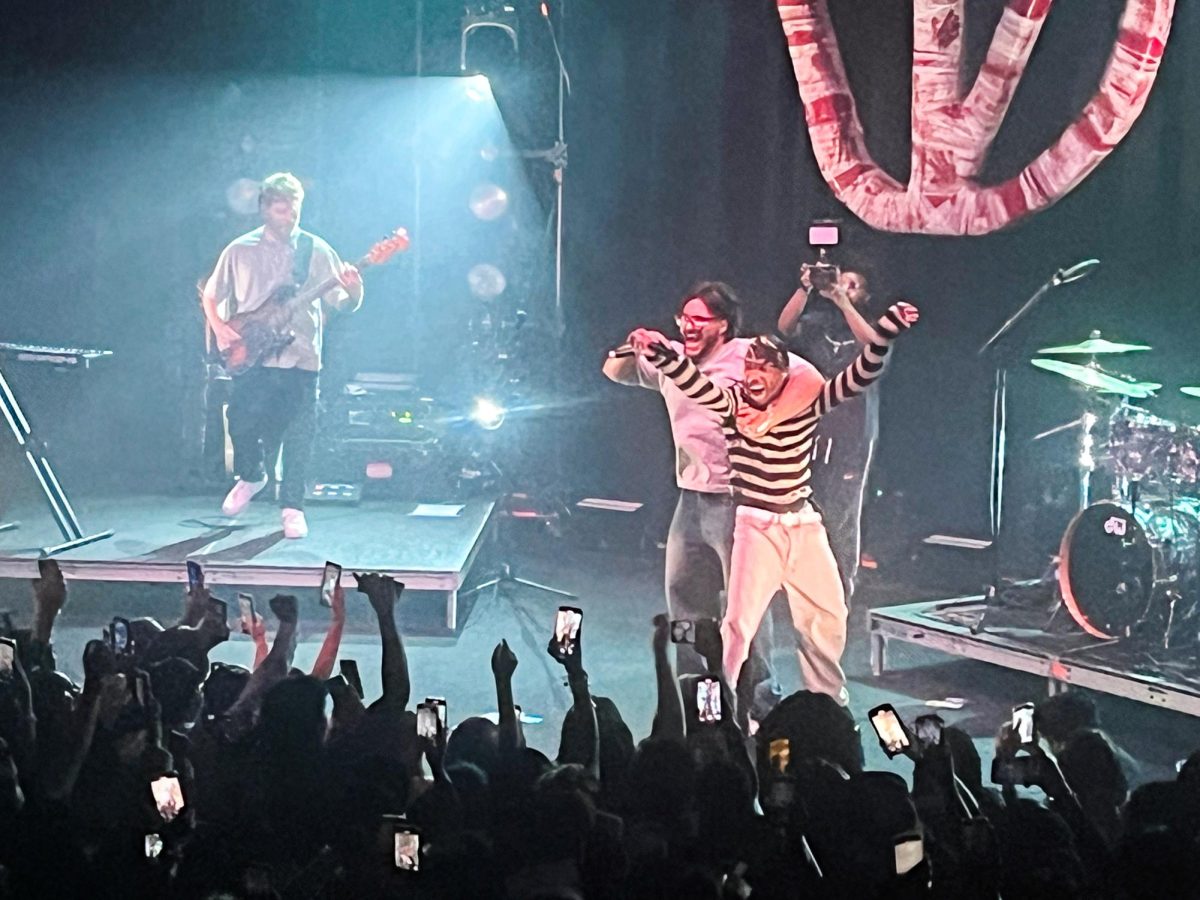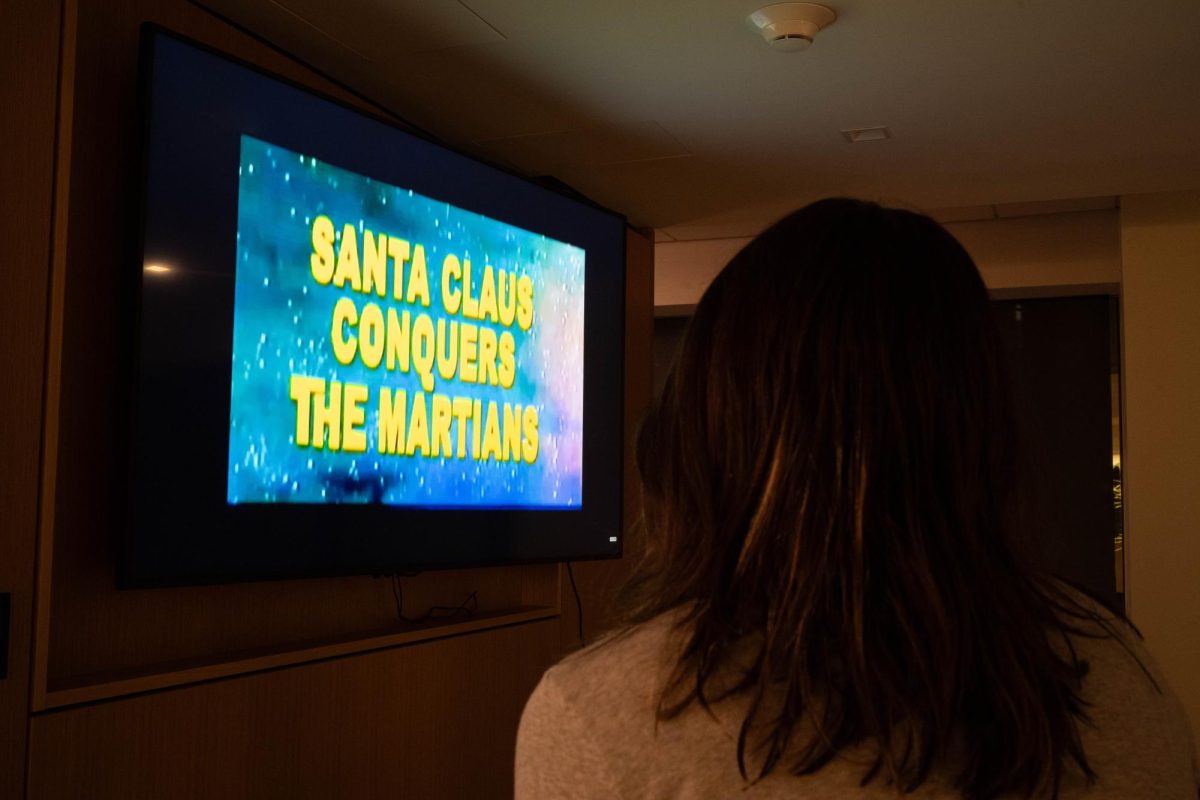The National Museum of African American History and Culture’s newest exhibit visually immerses visitors through more than 100 artifacts highlighting the futuristic, cultural and science fiction contributions of the African diaspora, a genre known for its empowerment of the Black community.
[gwh_image id=”1184679″ credit=”Courtesy of the National Museum of African American History and Culture” size=”post-thumbnail” align=”right” /]
The exhibition, “Afrofuturism: A History of Black Futures,” which opened late last month, chronicles the evolution of Afrofuturism – an artistic, scientific and historical genre that blends science fiction with the Black experience and empowers the African diaspora in a global setting that has seen us as inferior since the start. As the gleaming gem of the exhibit, the iconic Panther Habit suit from “Black Panther” worn by the late actor Chadwick Boseman, represented one of the many examples of Black people reshaping stereotypical depictions, allowing us to imagine ourselves outside of current societal constraints.
“We hope that visitors learn more about this topic by seeing the various ways that Afrofuturism connects with and influences our popular culture and gain a broader understanding of Afrofuturism, not simply as a subgenre of science fiction and fantasy, but as part of a larger tradition of Black intellectual history,” curator Kevin Strait said in a press release earlier this month announcing the exhibit’s opening.
The first zone of the exhibit starts with the history and definition of Afrofuturism displayed on the wall where visitors first enter while adjacent projections play clips of relevant experts describing it in more detail, like Mark Dery, the cultural critic who coined the term. This area also displays how, before colonization, different civilizations of the African continent, including the Dogon and Yoruba people in West Africa and Egypt, used their knowledge of astronomy to advance their societies with inventions like the Nabta Playa – the first stone circle in the world.
[gwh_image id=”1184682″ credit=”Courtesy of the National Museum of African American History and Culture” size=”large” align=”left” /]
The most expansive part of the exhibit was the “Music and Afrofuturism” section featuring two large screens rotating between live and music video performances of artists characterized as Afrofuturist, like Janelle Monáe and Prince. The caption plaques below each featured artifact – from Michael Jackson’s chair from his futuristic “Scream” music video to Future Man’s “drumitarm,” a guitar synthesizer that plays percussion sounds – detailed how each Black musician or music group produced futuristic music with state-of-the-art technology. Album covers from artists who produce Afrofuturist-inspired content adorned the walls, including the covers of Thundercat’s 2020 album “It is What it Is” and FKA Twigs’ 2014 album “LP1.”
A side wall of the exhibit touches on the exploitation of Black bodies in the medical field. One painting shows Henrietta Lacks, whose cells doctors took without consent in the mid-20th century and continue to use for scientific research without compensation to her family. A painting of an enslaved woman on an operating table surrounded by white men with two enslaved women peeping from the curtains depicted the experimental surgeries the mothers of gynecology – Anarcha, Lucy and Betsey – were subjected to as enslaved women at the hands of James Marion Sims, a physician in the 19th century.
American history artist Stephen Towns’ painting “An Offering” reclaims the Black identity lost during the trans-Atlantic slave trade. The top half depicts an enslaved person, beautiful and full of life dressed in red and white cloth and standing in front of a golden background with a surrounding sprinkle of butterflies. The bottom half below the individual showed hand silhouettes holding candles, which the painting’s caption referred to as offerings to the ancestors, paying tribute to those forgotten during the Middle Passage.
The exhibit also featured an area representing Black people’s scientific involvement, with everything from scientific breakthroughs to sci-fi TV shows. A key display included the flight suit worn by the late Trayvon Martin – a 17-year-old boy whom police killed in 2012 – at Experience Aviation, a program to teach young teens about STEM. This portion also featured the suit of Lt. Nyota Uhura from Star Trek, played by Nichelle Nichols – the first Black woman in a non-domesticated lead role. Framed photos of the seven “hidden figures,” who contributed to the technological advancements of NASA during the Space Race, line the walls.
[gwh_image id=”1184683″ credit=”Courtesy of the National Museum of African American History and Culture” size=”large” align=”right” /]
The 21st-century portion of the exhibit, dubbed “Black Bodies, Black Lives,” highlighted the Black Lives Matter movement with mobile technology, specifically content taken with phone cameras, exposing the injustices and brutality Black people have endured in the modern day from law enforcement. The most memorable display was “The Mirror Casket,” a glass casket with the top shattered to symbolize the broken state of our society. The casket was first carried from the site of the death of Michael Brown – the unarmed Black teenager from Ferguson, Missouri, who was killed at the hands of police – to the Ferguson Police Department during the 2014 protests after his death.
“Building Black Worlds” pays homage to the “Black Panther,” the first mainstream Black superhero in the Marvel Cinematic Universe, to cap off the exhibit. As the film’s Oscar-nominated song “All the Stars” by SZA and Kendrick Lamar played in the background with small specks of purple light on the walls, the scene was perfectly set for the grand display – Boseman’s high-tech, vibranium-infused suit. Museum-goers stood in awe of its aura as they took pictures with the display while doing the iconic Wakanda salute.
The entire Afrofuturism exhibit places Black people at the center of all things futuristic from the start, ranging from science fiction comics to music innovations, honing in on the creative strength of the Black community. With so many visual, physical and musical representations of Afrofuturism to fit into this story, the museum provides an out-of-this-world experience and, especially as a Black American – a personal and spiritual journey.
The exhibit will remain open until March 24, 2024.


